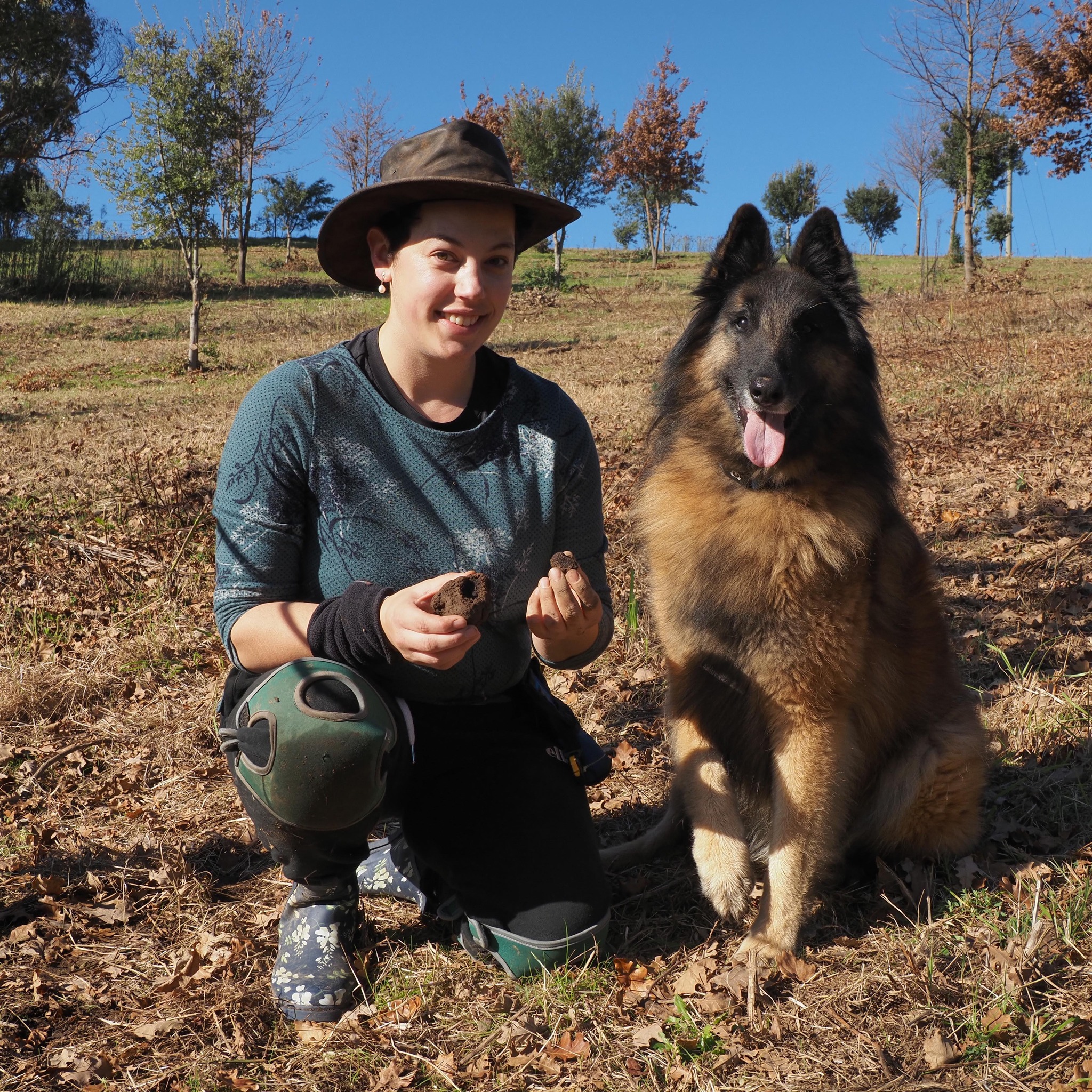Dougie's First Week during his Truffle Dog Training journey.

This is the next installment of Dougie’s truffle dog training Journey where he starts week 1 which involves 3 tasks: 1. Teaching “Show” 2. Increasing focus with distractions 3. Working on marking accuracy.
This is the next instalment of Dougie’s truffle dog training Journey where he starts week 1 which involves 3 tasks:
Teaching “Show”
Increasing focus with distractions
Working on marking accuracy.
Dougie’s owner wrote me a detail list of the locations which she did the training on each day of training. She did an amazing job following the instructions to slowly add in distractions. Starting at well known locations, before moving on to more distracting locations which the dog hasn’t visited as often. As explained in the course if we add in a challenge then we need to take a challenge away. So, when she started to teach “Show” command the first session was back inside the house before then heading outside again.
After reviewing her videos I sent her a summary with time stamps for her to rewatch the videos with these time stamps in mind.
I wrote to her:
“When looking for body language it's all about the COB's before the alert that I'm keen for you to see. I want you to really understand the moment they walk into the scent cone. This can help you 'see' the scent cone during live searching. It takes a lot of practice to see these little COBs when the dogs are doing them live as they move so much faster than humans as they can 'see' the scent cone with their noses. They can process the scent information very quickly and make snap decisions based on that information due to the large amount of space in the brain dedicated to smell. They can move very fast. They also have a faster flicker fusion rate than humans. Although light is continuously coming into our eyes the processing of the light actually stops and starts. Our brain has to take an image process and then be ready for the next image. There is a time when there is no image. This is the flicker fusion rate. Humans are at 50-60 Hz dogs are at 80Hz. The easiest way to imagine it is that they see things in slower motion. So, it takes practice for us to be able to see these fast movements and process them as quickly as the dog moving in live searching. Hence time stamps things and watching things in slow motion when trying to see things better”
One of the tricky thing Dougie’s owner wasn’t sure about was when she asked “Show” Dougie started picking up the hide. This is something he has never done before and she wasn’t sure what this meant only that it probably wasn’t a good thing. She was concerned about him learning an undesirable behaviour.
I explained to her “that I was just happy they understood it so quick. Some dogs will just stare up at you when you say it and don't offer any behaviour. Even though the behaviour of digging scratching picking up is obviously something that we will not encourage, it's fine for them at this early stage to offer random behaviours as they are not sure what exactly you want. Just the fact that they are indicating something with the hide when you say 'Show" is good. We just need to tweak what behaviour we want. Dogs will offer a whole lot of random behaviour in the hope that one will be right and be one we are looking for. We just need to show them which action we want. They will offer these behaviours in quick succession to try and get the right one. They may offer the behaviours a little slower if they have already had one treat. They do a nose point as a first alert. So, what I think we should do is this:
1. When he nose point for the first time say 'Yes" like you usually do and reward at source with a single treat. He is used to getting more than one treat. He may feel hard done by with only one and that's fine. This can work to our benefit.
2. Stay low to the ground at the source like you normally do when given him multiple treats. Say "Show" and as soon as his nose goes back to it "Yes" and reward. Feel free to say it a few times as he gets each treat after nose pointing. They can work a little harder for the bonus treats by nose pointing.
3. He may try a paw tap but ignore that behaviour. As soon as his nose goes towards it either as a nose point or to pick it up, get the "Yes" in there before they pick it up”
I gave her the option to stay at “Show” training for half of the next week and push back the next challenge as to consolidate “Show” before moving onto the next task of variable weather conditions.
The important thing is to change things as we go. Tweak the weekly tasks to suit the dogs, not to suit us. Some things will be understood quicker and some challenges the dogs will more challenging. We want to spend more time on the harder things to get their confidence up.
Dougie’s owner wrote back that: “That was what I really needed, to see what you were seeing. I had slowed down the videos before I sent them but wasn't exactly sure what I was looking for so have been through them again with your points and that was great”.
Next instalment I’ll talk about how the “Show” command changed with the suggestions and introduce the next weeks task.